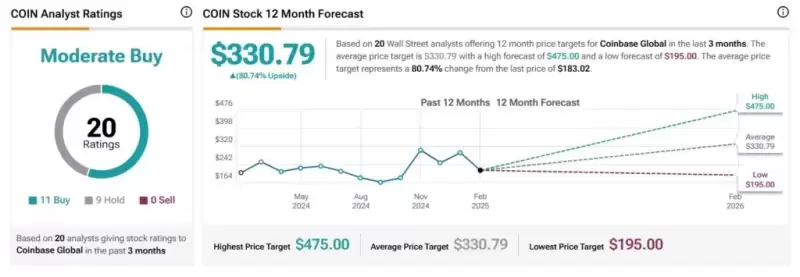 |
|
 |
|
 |
|
 |
|
 |
|
 |
|
 |
|
 |
|
 |
|
 |
|
 |
|
 |
|
 |
|
 |
|
 |
|
Cryptocurrency News Articles
Coin Collecting: A Centuries-Old Hobby That's Popular with a Surprisingly Young Generation
Sep 05, 2024 at 02:07 am
In an era where new technology often replaces old interests, the centuries-old hobby of coin collecting has become popular with a surprisingly young generation.

Coin collecting, a centuries-old hobby, is surprisingly popular among younger generations despite the increasing digitalization of society. Here's a closer look at the enduring fascination with coins and how technology is shaping the hobby today.
Coin collecting has been around for centuries, dating back to the Roman Empire. It involves collecting coins, tokens, and paper money, and studying their monetary value and historical significance. Over the years, many organizations have been established to promote numismatics, including the American Numismatic Society and the Royal Numismatic Society.
According to a 2022 survey by GovMint, at least three in five Americans identify as collectors, and 17% of those collect coins. People are drawn to the hobby for various reasons, such as connecting with others through a shared interest, preserving historical figures and moments, and celebrating the artwork on coins. Curated collections, like the Smithsonian's National Numismatic Collection, also provide public education about the monetary value and broader cultural significance of currency.
Interestingly, younger generations are keeping the tradition of coin collecting alive. Despite the decline in cash use, coin collecting is growing among Gen Z. A survey by the U.K.'s Royal Mint found that Gen Z is most likely to start collecting, with about two in five already having a collection and viewing it as an investment towards their future.
Millennials and Gen Z are driven by nostalgia and the desire to hold on to tangible objects in a world that becomes more digitally focused every day. Some of them find joy in hunting down Olympic Commemorative Coins, released between 1983 and 2002, or the 50 State Quarters Program coins that ran from 1999 to 2008.
Moreover, coin clubs are providing young people with opportunities to socialize and buttress themselves against loneliness and isolation, an issue that has been highlighted by the United States Surgeon General.
"Doing something that is good for your mental well-being is very important," said Rowan Chetner, a coin collector, about the Tufts Coin Club Collective, which started as an official university club in 2023 and is characterized by a "really fun and safe environment."
Coin collecting clubs across the U.S. are even fostering a love for numismatics in younger children. The Boy Scouts of America offer a Coin Collecting Merit Badge, the Girls Scouts of the USA offer a Fun with Money Council Patch, and the American Numismatic Association's Young Numismatists program has over 1,200 members between ages 5 and 18.
Technology is also having an impact on the coin collecting hobby. Many young collectors are finding their fascination with coins is turning a profit. Some collect coins and sell them through Instagram or eBay to help pay for college or other expenses.
Additionally, mints across the globe are drawing interest by creating new coins that glow in the dark, have unique colors, or can be scanned with a mobile phone to reveal more information. Non-fungible tokens, or NFTs, even make collecting entirely virtual, with unique digital coins that can be bought and traded just like real currency.
Finally, the value of coins can vary greatly depending on factors like rarity, condition, and demand. Some older coins can be worth hundreds of thousands or even millions of dollars. For example, the series of silver Nova Constellatio patterns, designed as proofs in 1783, is valued from $900,000 to nearly $2 million each. Among the "Jefferson cents" - copper coins produced from 1793 to 1796 - the most valuable ones are worth up to $576,000. The most expensive coin ever sold is a 1933 Double Eagle, which brought $18.9 million at a 2021 auction.
However, age alone does not determine the value of a coin. Less than a century old, the 1944 Steel Wheat is arguably the most valuable penny in 2024, estimated at $408,000. The 2000-P Sacagawea Dollar - called the "Wounded Eagle" for the misprint that looks like a scratch through the bird's body - is one of the most valuable coins still in circulation, selling for up to $7,200.
In 2023, the global coin collecting industry was valued at an astounding $18.1 billion, and if growth continues on this trajectory, it is expected to reach nearly $44 billion over the next decade. With this potential for continued growth, both in popularity and financial payoff, it appears young numismatists have selected a lucrative hobby for years to come.
Disclaimer:info@kdj.com
The information provided is not trading advice. kdj.com does not assume any responsibility for any investments made based on the information provided in this article. Cryptocurrencies are highly volatile and it is highly recommended that you invest with caution after thorough research!
If you believe that the content used on this website infringes your copyright, please contact us immediately (info@kdj.com) and we will delete it promptly.
-

-

-

- Brian Armstrong says the US economy would benefit if Congress adopts stablecoin legislation
- Apr 03, 2025 at 02:10 pm
- In a new post on the social media platform X, Armstrong says dollar-backed stablecoins are growing in popularity and could yield increased benefits for users as well as the US with changes to the law.
-

-

-

-

-

-




























































